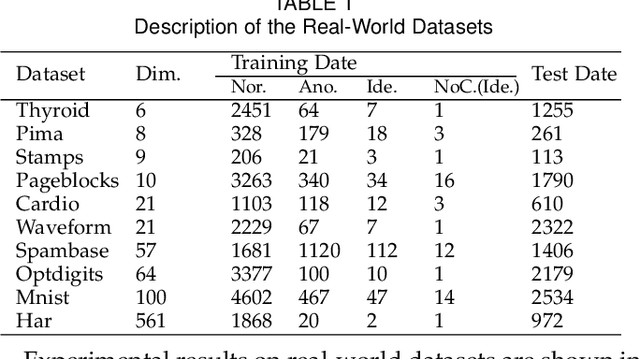Chunhua Sun
RCC-Dual-GAN: An Efficient Approach for Outlier Detection with Few Identified Anomalies
Mar 07, 2020



Abstract:Outlier detection is an important task in data mining and many technologies have been explored in various applications. However, due to the default assumption that outliers are non-concentrated, unsupervised outlier detection may not correctly detect group anomalies with higher density levels. As for the supervised outlier detection, although high detection rates and optimal parameters can usually be achieved, obtaining sufficient and correct labels is a time-consuming task. To address these issues, we focus on semi-supervised outlier detection with few identified anomalies, in the hope of using limited labels to achieve high detection accuracy. First, we propose a novel detection model Dual-GAN, which can directly utilize the potential information in identified anomalies to detect discrete outliers and partially identified group anomalies simultaneously. And then, considering the instances with similar output values may not all be similar in a complex data structure, we replace the two MO-GAN components in Dual-GAN with the combination of RCC and M-GAN (RCC-Dual-GAN). In addition, to deal with the evaluation of Nash equilibrium and the selection of optimal model, two evaluation indicators are created and introduced into the two models to make the detection process more intelligent. Extensive experiments on both benchmark datasets and two practical tasks demonstrate that our proposed approaches (i.e., Dual-GAN and RCC-Dual-GAN) can significantly improve the accuracy of outlier detection even with only a few identified anomalies. Moreover, compared with the two MO-GAN components in Dual-GAN, the network structure combining RCC and M-GAN has greater stability in various situations.
 Add to Chrome
Add to Chrome Add to Firefox
Add to Firefox Add to Edge
Add to Edge